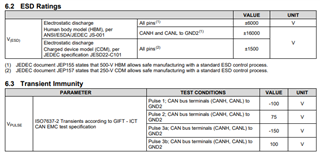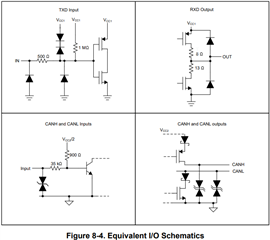Other Parts Discussed in Thread: ISO1042, ISO1050
Hello,
I use ISO1042 in a design.
I'm doing a simulation to see the level of current in the differential inputs, CANH and CANL with 1200V/1Ohms générator across the emc filter inputs (with protections like TVS).
Which kind of structure there is between CANH, CANL and VCC2/GND2? A type of ESD diode/zener? Inside the specification I see that the voltage must be lower than 70V. After 70V there are some diode activated?
I don't care if I will destroye the component. I just want to estimate the input current if the input voltages (CANH, CANL) increase more than 70V (and let's say stay below 90V for instance for at least 10µs).
Best regards,



